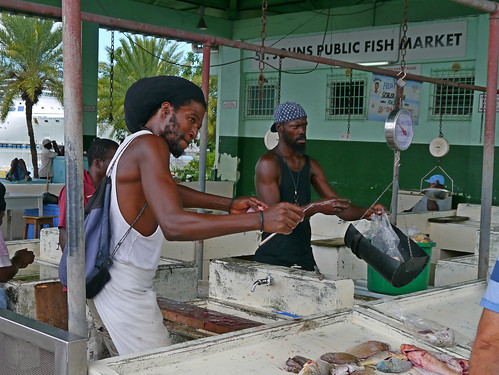8月12日加勒比海雙島國安地卡和巴布達簽署新的海洋管理規範,將沿岸水域分區、加強漁業管理並建立5處海洋保護區,保護巴布達島周邊33%的海域。
重建魚群 巴布達島率先實施「藍暈倡議」
新規將於2015年實施,禁止在科德林頓潟湖捕魚兩年;16%的巴布達沿岸水域以及珊瑚礁20公尺(65尺)內禁用漁網;禁止捕撈鸚嘴魚和海膽,因為這些食草生物能控制珊瑚礁的藻類數量,讓珊瑚礁有適宜的生存環境。
由美國加州La Jolla韋特研究所(Waitt Institute)出資,進行為期17個月的社區諮商和科學研究之下,這項「藍暈倡議」(Blue Halo Initiative)新規範於焉產生,目的是重建巴布達沿岸5.5公里範圍內的魚群數量和棲地。巴布達也是第一個有此類規範的加勒比海島嶼。
巴布達政府完全支持藍暈倡議:「這絕對能為巴布達和安地卡人民帶來利益;此舉並非為了打擊漁民,相反的,這能確保漁民永續生計。」巴布達議會和安地卡巴布達漁業部長Arthur Nibbs說。
研究指能增加捕撈量 漁民仍急尋替代收入
雖然保育人士和巴布達政府慶祝新規的完成,巴布達漁民卻對新規可就不是那麼滿意。
根據當地媒體「安地卡觀察報」8月19日報導,在巴布達以43艘作業漁船維生的漁民要求巴布達議會和相關倡議組織,在新規生效前為他們尋找替代收入來源。
安地卡漁民合作組織前總裁Gerald Price指出,安地卡漁民或許能改行當木工或飯店工人,但除此之外巴布達其他的工作機會並不多。
不過,韋特研究所和安地卡巴布達政府及巴布達議會之間沒有任何正式合約。韋特研究所僅提供工具、資源和訓練,讓巴布達發展和實施新政策以永續利用沿岸資源,並根據科學、個案研究以及對巴布達的深入瞭解制定政策。
韋特研究所說,「藍暈計畫的目標是改善巴布達人民生計,避免漁業資源耗竭,改善捕撈數量,進而改善未來世代的漁業環境。重建沿岸魚群讓漁民可以靠近沿岸捕撈,可花較少的油錢以小船安全地作業,增加淺海潛水安全性,進而增加捕撈量。」
The twin-island Caribbean nation of Antigua and Barbuda has imposed new regulations to establish five marine sanctuaries protecting 33 percent of the waters surrounding Barbuda.
Known as the Blue Halo Initiative, the new rules are intended to enable fish populations to rebuild and habitats to recover in the waters within 5.5 kilometers (3.4 miles) of the Barbuda coast.
On August 12 the Barbuda Council signed the new ocean management regulations that zone the island’s coastal waters, strengthen its fisheries management, and establish the marine sanctuaries.
Scheduled for implementation in 2015, the rules will impose a two-year ban on fishing in the Codrington Lagoon. Fishing nets will become illegal in 16 percent of Barbuda’s coastal waters and anywhere within 20 meters (65 feet) of a coral reef.
Catching parrotfish and sea urchins has been prohibited, as those herbivores keep algae levels on reefs low enough so that coral can thrive.
Barbuda is the first Caribbean island to put these measures in place. The new rules of the Blue Halo initiative come after 17 months of community consultation and scientific research with financial support from the Waitt Institute, based in La Jolla, California.
The Barbuda government is fully behind the Blue Halo Initiative.
“This will definitely benefit the people of Barbuda, and Antigua as well. No part of this is meant to hurt fishers. It’s the reverse – ensuring that they have a livelihood that will last in perpetuity,” said Arthur Nibbs, chairman of the Barbuda Council and Antigua and Barbuda minister of fisheries.
While conservationists and the Barbuda government are celebrating the new rules, Barbudan fishermen are not so happy.
The “Antigua Observer” newspaper reported August 19 that people who make their living on Barbuda’s 43 active fishing vessels are appealing to the Waitt Institute and the Barbuda Council to find alternative income sources for them before the rules take effect.
Gerald Price, former president of the Fisherman’s Cooperative on Antigua, said that while Antigua fishermen can make a living with carpentry or hotel work, other employment is hard to find on Barbuda.
There is no contract or other formal agreement between the Waitt Institute and the Government of Antigua and Barbuda or the Barbuda Council. The Waitt Institute provides the tools, resources, and training to enable Barbuda to develop and implement new policies for sustainable use of coastal resources. The Waitt Institute makes policy recommendations based on science, case studies, and a deepening understanding of the specific situation in Barbuda.
Instead, the Waitt Institute says, “The goal of the Barbuda Blue Halo Initiative is to improve the lives of the people of Barbuda by replenishing fish stocks therefore improving catch quantity, and ultimately improving and securing fishing potential for future generations. Restored coastal fisheries means fishermen can stay closer to shore, spending less money on gasoline, safer fishing trips for small boats, and increased safety for SCUBA and free divers who can dive shallow waters for a good catch.”
※ 全文及圖片詳見:ENS







